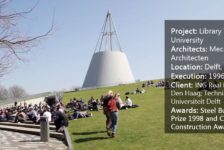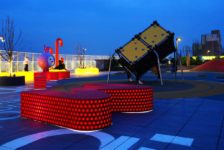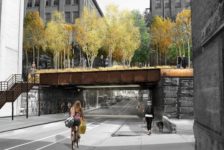We take a closer look at the surge of interest in the revitalization of industrial landscapes bringing about some of the world’s best landscape architecture. Parks created on former industrial sites are becoming a recurring theme. Dumping grounds, abandoned factories, industrial ports, and mines are being turned into vibrant public places that celebrate these sites’ industrial past. Traditionally, industrialized spaces have been considered polluted and unappealing zones that must be hidden and tucked away from peoples’ everyday lives. So what changed? In this article, we explore four reasons why industrial sites are becoming a favorite to work with for landscape architects.
The Revitalization of Industrial Landscapes
1. They Represent a Large Number of Vast and Unused Spaces
The industrial revolutions witnessed the manifestation of new landscapes, especially since the late 19th century. Steam-powered factories for iron, textile, and steel swept through the rural landscapes, replacing them with an urbanized scenery of grim and grand manufacturing structures. The industrial demand in Europe and the United States was especially high during the two World Wars, due to the need to produce heavy machinery and vehicles. The need, however, decreased during the 1970s, forcing many factories to close. The crisis augmented as well with the development of information technologies.
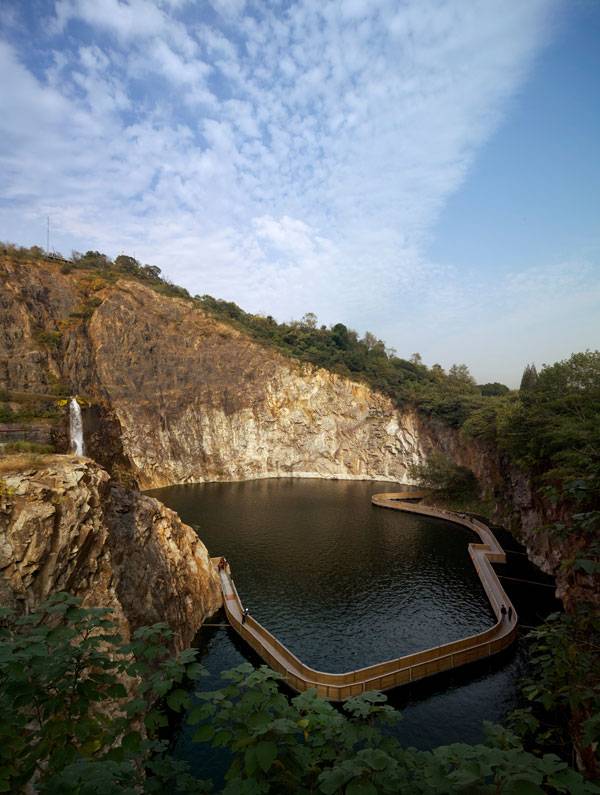
Quarry Garden in Shanghai Botanical Garden. Photography credit: Yao Chen
See More Industrial Inspire Landscape Architecture:
- Offenbacher Hafen Turns from Polluted Industrial Port to Ecological Riverfront
- Top 10 Ex-Industrial Sites Turned Into Stunning Landscapes
- Industrial Site Transforms into Beautiful Landscape
2. The Rising of Industrial Heritage (UNESCO)
The need to rethink industrial open spaces amplified after the UNESCO included a section on its World Heritage List entitled “Industrial Heritage”. More than 45 industrial sites from all around the world have been added to the list since 1978 as “important milestones in the history of humanity, marking humanity’s dual power of destruction and creation that engenders both nuisances and progress.” (UNESCO). The list includes but is not limited to railways, mining sites, irrigation systems, factories, mills, and landscapes incorporating industrial structures. While industrial heritage usually brings to mind the grandiose structures of the 19th and 20th centuries, it also includes more ancient functions, such as the Aflaj irrigation systems of Oman, which date back to as early as 300 AD. The fact that industrial sites — counting structures, buildings, and landscapes alike — are increasing on the list of protected heritage means that designers have been mobilized to enable not only strategies of conservation, but sometimes also of reuse.
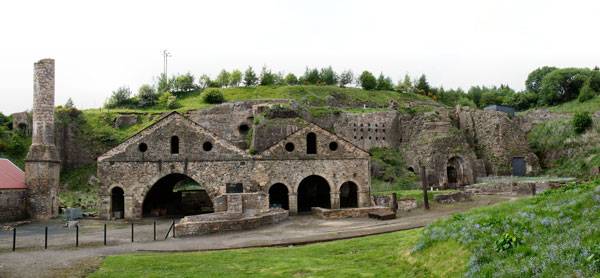
“Blaenafon Ironworks, a Unesco World Heritage site in Wales, UK”. Image licenesd under CC BY-SA 2.0 By Alan Stanton – originally posted to Flickr as Blaenafon Ironworks. Via Wikimedia Commons
3. Great Potential for New Creative Design Solutions
Industrial landscapes are viewed to a certain extent to be places of no aesthetic value and — even more so — places that are scarred for life and will never regain their natural beauty. And there lies the challenge of the landscape architect. For he or she carries the mission of changing the public’s popular perception that abandoned facilities such as factories cannot be anything but ugly. Another design challenge is to remain faithful to the original structure and yet reintegrate it in a contemporary technology and function. Lighting is one of the vital elements to industrial revitalization, as it highlights and enlivens the existing structures. The second importance is the usage of material inspired by the site itself (such as using rusted steel or recycled tires).
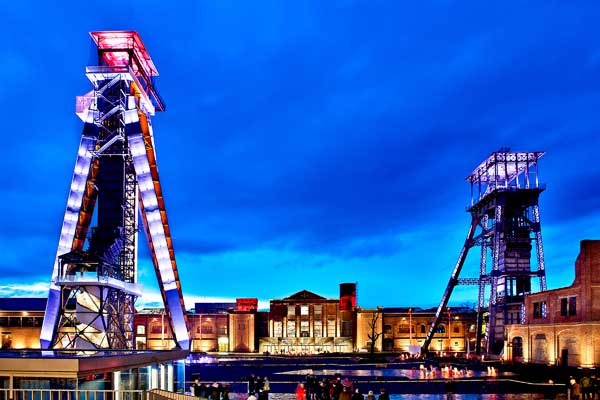
The plaza incorporates the existing industrial buildings with the help of a bright lighting design and cultural activities. GENK C-m!ne by HOSPER in Genk, Belgium
4. A Platform of Economic and Ecological Innovations
As mentioned earlier, creating new designs for industrial spaces requires the reinvention of their functions. This provides the surrounding communities with new cultural and entertainment hubs, but also with new economic opportunities. Turning an abandoned building that is generating nothing but rust into a new local and tourist attraction is a definite advantage. The UNESCO-inscribed Zollverein coal mine industrial complex in Essen, Germany, which used to be the largest coal mine in Europe, has been successfully transformed into an arts and cultural center. The new design also integrates an ice-skating rink in the coking plant, as well as a restaurant.
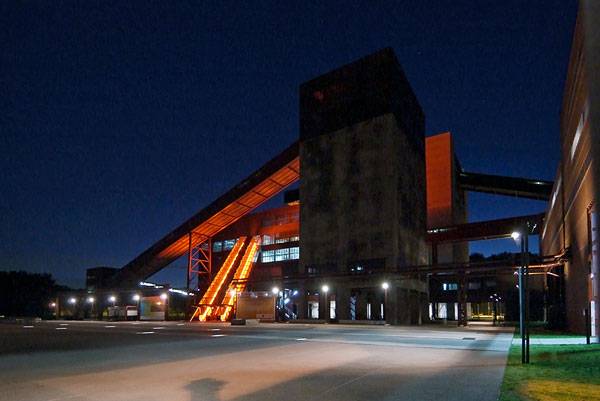
“Zeche Zollverein Essen Okt10 008” by Ungaroo – Udo Ungar – Own work. Licensed under CC BY-SA 3.0 via Wikimedia Commons
Add in Sustainability
The revitalization of industrial spaces also allows for a chance to explore with sustainable design. Industrial zones are very often contaminated with oils, heavy metals, and other polluting materials that prevent the site from regaining its natural feel. This is why when working with an industrial site, a landscape architect must be fully aware not only of its aesthetical properties, but also of its environmental conditions. The Offenbach harbor presents an outstanding example of how a polluted port can be transformed into an ecological site. Flood protection measures and water and soil remediation were key solutions to creating an environmentally sensitive design.
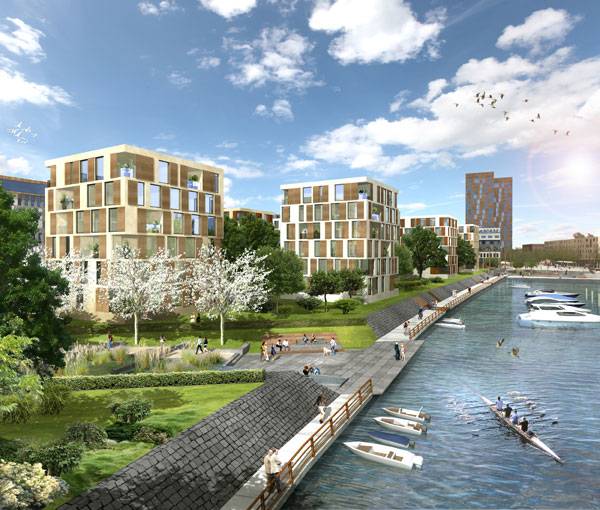
Offenbacher Hafen Turns from Polluted Industrial Port to Ecological Riverfront. Image credit: Atelier Dreiseitl.
Opportunity Rises from the Ruins
From providing large open spaces that are much needed in our urbanized world, to being a new tourist attraction, to creating new economic, ecological and design opportunities, former industrial sites leave much to look forward to, and that is why working with them is increasing in popularity among landscape architects! Tell us about your favorite redesigned industrial landscapes, and we might feature them in a new Top 10 of ex-industrial sites. Recommended Reading:
- Designing the Sustainable Site: Integrated Design Strategies for Small Scale Sites and Residential Landscapes by Heather L. Venhaus
- Lifelong Landscape Design by Hugh Dargan
Article by Dalia Zein References: https://www.history.com/topics/industrial-revolution https://www.utppublishing.com/Industrial-Ruination-Community-and-Place-Landscapes-and-Legacies-of-Urban-Decline.html https://whc.unesco.org/archive/ind-study01.pdf https://whc.unesco.org/ https://whc.unesco.org/en/list/1207 https://whc.unesco.org/en/list/984 https://www.inyourpocket.com/essen/industrial-tourism-in-the-ruhrgebiet_56002f Return to Homepage
Published in Blog


